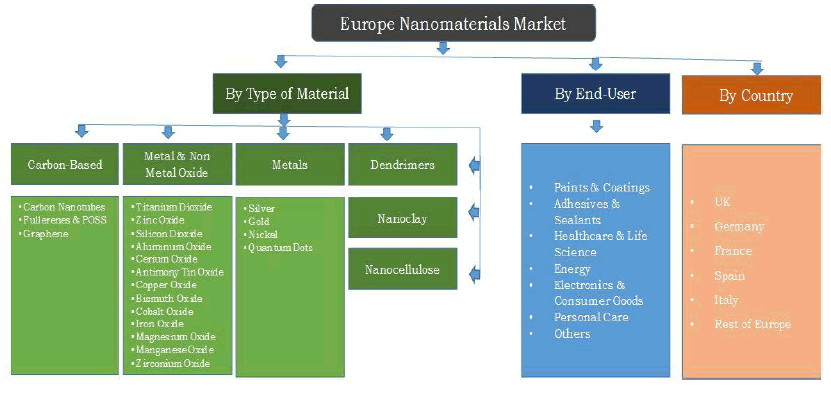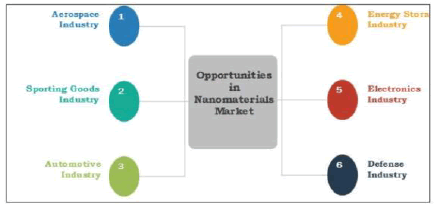Journal of Biomedical Engineering and Medical Devices
Open Access
ISSN: 2475-7586
ISSN: 2475-7586
Market Analysis - (2019)Volume 4, Issue 3
After the successful completion of several “Material Science and Nanotechnology”, the Longdom is glad to include another international conference in the series. The conference is tilted as “Future Trends on Material Science and Nanotechnology” the conference will be held on July 22-23, 2020 at London, UK.
This 2020 Nanomaterials Conference will give you exemplary experience and great insights in the field of research.
According to this analysis report, the world marketplace for Material Science and engineering is projected to point out a strong growth of seventeen p.c within the Compound annual rate of growth (CAGR) throughout 2018-2028.
Nanomaterials Market was valued at $14,741.6 million in 2015, and is predicted to achieve $55,016 million by 2022, supported by a CAGR of twenty.7%. Nanomaterials are often outlined because the materials with a minimum of one external dimension within the size vary of roughly one to one hundred nanometers.
The report focuses on current market trends and future growth opportunities of nanomaterials, in industries like paints & coatings, adhesives & sealants, healthcare, energy, physics & goods, aid, and others. It conjointly emphasizes on varied kinds of Nanomaterials that ar commercially out there within the market, namely, carbon based mostly (carbon nanotubes, fullerenes & POSS, and graphene), metal and non-metal oxides (titanium oxide, zinc oxide, oxide, alumina, metallic element chemical compound, metallic element tin chemical compound, oxide, Bi chemical compound, Co chemical compound, iron oxide, magnesia, metal chemical compound, and Zr oxide), metals (silver, gold, nickel, and quantum dots), dendrimers, nanoclay, and nanocellulose. It conjointly analyzes this market trends of Nanomaterials in several geographies and suggests the long run growth opportunities by analyzing government rules & policies, which may additional increase the buyer acceptance in this region.
According to the angle of leading firms, the factors that drive the demand for Nanomaterials in varied end-user industries ar growing investment in analysis and development, increasing quality of Nanomaterials in varied application industries, and also the glorious physio-chemical properties of nanomaterials. Nanomaterials ar typically extra in tiny quantities to enhance the performance of the bottom material. However, factors like demanding environmental rules and high worth of Nanomaterials might hamper the market growth. Currently, the paints & coatings, adhesives & sealants, physics & goods, and private care segments ar the key end-user markets for nanomaterials.
In recent years, the marketplace for Material Science and engineering has seen vital growth directly on the rear of the increasing variety of technologies.
Nanomaterials are components which, in any case, have one spatial estimate in the range of 1 to 100 nanometres. Nanomaterials can be supplied with a range of modification steps. Alternate nanostructures, such as quantum specks, nanocrystals, nuclear clusters, nanotubes, and nanowires, may well be used, while the aggregation of nanostructures includes networks, collections, and supernets of various nanostructures. The synthetic and physical properties of nanomaterials can vary greatly from mass to sub-materials Atomic nuclear materials have a similar arrangement in place. The nature of the auxiliary structures, materials, theory, reactions and vitality of the nanostructure are the premises of nanoscience. This conference will further extend awareness on nanomaterials and nanotechnology, as well as on groundbreaking developments in the field of nanomaterials. The U.S. is the largest market for nanomaterials due to the large use of nanotubes in various industries. Electrical and electronics, pharmaceutical and chemical products are the main market categories in the Region. The American economy. Europe also had a significant market share in the nanomaterials industry. Decrease in the price of nanomaterials due to an increase in mass production has led to a robust growth of nanomaterials in these regions. Asia Pacific is expected to see phenomenal growth in the projected timeframe. Increasing government funding and support, growing environmental awareness and increasing demand for specialty materials are expected to fuel the growth of the nanomaterials industry in the foreseeable future. They are governed by the REACH and CLP Regulations in the European Union Even while the U.S. FDA controls nanomaterials on the American market. Nanoscale materials manufacturing will have an increasingly important impact on a number of sectors, including biotechnology, electronics, energy and industrial products the demand for nano-sized ceramic powders is likely to grow at a healthy growth rate of about 10% per year over the next five years. MWNT filled polymers are successful commercial products for automotive applications. Nanocomposites have established niche applications, such as Automotive (under the hood and outside) and beverage packaging. More businesses will enter the nanomaterials industry. At the same time, there will be an increasing number of business relationships, such as patent licensing and joint marketing, in order to accelerate the commercialization of new products, and the funding for research and development for nanomaterials will continue to increase over the next decade. The global market for nanomaterials in 2006 was around US$ 18,000, and global investment is expected to increase by 60 per cent by the end of 2020.


Contact:
Maxwell Grant.
Program Director
Email: materialsciencetalks@longdommeetings.org
WhatsApp No: +32 466903213
Copyright: This is an open access article distributed under the terms of the Creative Commons Attribution License, which permits unrestricted use, distribution, and reproduction in any medium, provided the original work is properly cited.